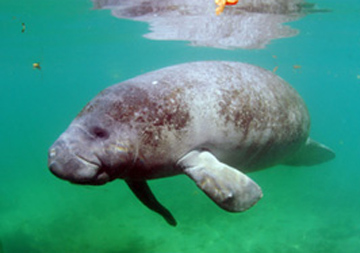Manatees are some of the most inoffensive creatures on the planet. They’re big, slow, and friendly. Yet their encounters with people often leave them battered and scarred. Over the last few decades, marine biologists have been using those scars to keep track of the manatees — an effort that should yield new insights into how manatees live and how they respond to the changing environment.
 Marine biologists use scars to track manatees. Credit: Ray Eccleston
Marine biologists use scars to track manatees. Credit: Ray EcclestonOne of the world’s largest populations of manatees is found in Florida. The creatures feed off seagrass, mangrove leaves, and algae — all of which are found in shallow waters, which can also be popular hangouts for people. As a result, encounters between manatees and people are common — and usually to the detriment of the manatees. Many of them have been mutilated and scarred by the propellers on boats, or by getting tangled up with fishing lines.
The scars leave distinctive patterns. And in Florida, researchers have used those patterns to identify about half of the state’s population of 5,000 manatees.
Long-term tracking shows where the manatees go during different seasons. It also helps scientists determine how often the females give birth, how long they nurse their pups, and how manatees respond to changes in the environment.
Because of all the unpleasant encounters with people, Florida manatees are an endangered species. But understanding more about their lives and habits may help get them out of harm’s way — keeping these inoffensive creatures from being scarred by their interactions with people.

